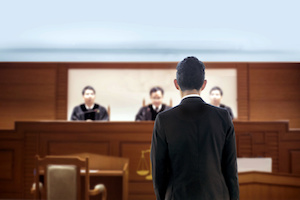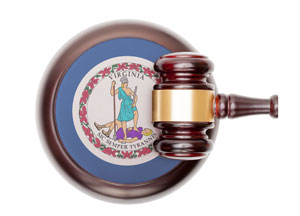During a groundbreaking seven-week trial, the State of Oklahoma offered evidence that Johnson & Johnson fueled the state’s opioid crisis by engaging in a marketing strategy that encouraged addiction to pain medication. The state advanced the novel theory that aggressive marketing of an addictive drug caused a public nuisance.
Two other companies, Purdue Pharma and Teva Pharmaceuticals, settled with Oklahoma. J&J has a long history of taking cases to trial when it is accused of wrongdoing, even when its corporate misconduct has been well documented.
Whether that litigation strategy will result in a favorable ruling in Oklahoma should soon be known. The suit against J&J (and its parent, Janssen Pharmaceuticals) is now in the hands of an Oklahoma judge. [Update: The trial judge ruled in favor of Oklahoma and granted judgment against J&J in the amount of $572 million.]
Trial Testimony
The trial depended on the testimony of both fact and expert witnesses. Fact witnesses focused on J&J’s sales representatives, who allegedly sold opioids to doctors even after the doctors were disciplined for overprescribing narcotics. J&J argued that sales reps are not required to learn whether doctors are overprescribing drugs. The company’s lawyers emphasized that their drugs are legal, highly regulated, and necessary for patients who would otherwise live with severe pain.
The case largely turns on expert testimony, as Oklahoma has not attempted to show that specific doctors were duped into prescribing opioids to patients who became addicted. Rather, Oklahoma endeavored to prove that the industry as a whole engaged in a pattern of marketing opioids aggressively while advising doctors that the risk of addiction was minimal.
To advance its proof, Oklahoma called Dr. Jason Beaman as an expert witness. Dr. Beaman chairs the Department of Psychiatry and Behavioral Sciences at Oklahoma State University in Tulsa.
Dr. Beaman expressed the opinion that doctors in the state were influenced by free meals and deceptive marketing efforts by drug companies to induce them to overprescribe opioid medications. He also discussed the impact of the opioid epidemic on public health in Oklahoma and the state’s need for funding to abate the addiction crisis.
Dr. Andrew Kolodny
Part of J&J’s defense focused on setting itself apart from Purdue Pharma, the manufacturer of OxyContin. Many states and individuals have sued Purdue and its principal owners, the Sackler family, for marketing practices that allegedly contributed to the opioid crisis.
While there is strong evidence that Purdue encouraged doctors to overprescribe OxyContin and that Purdue underplayed the drug’s addictive potential, J&J contended that the same is not true of its opioids. The company’s attorneys argued that its fentanyl patch (Duragesic) and its opioid-based pill (Nucynta) represent a very small percentage of opioids prescribed in Oklahoma and therefore could not have been a significant cause of the public nuisance of addiction in that state.
Dr. Andrew Kolodny, testifying as an expert for the state, pointed out that J&J manufactured the raw ingredients for opioids and sold them to other drug companies, including Purdue. J&J owns Tasmanian Alkaloids, a grower and supplier of the poppies from which opioids are made. J&J might therefore have a vested interest in downplaying the risks of opioids, even if its own opioid medications were not widely prescribed in Oklahoma.
Dr. Kolodny, the co-director of Opioid Policy Research for the Brandeis University Heller School for Social Policy and Management in Massachusetts, also testified that J&J downplayed the risk of opioids when selling them to doctors. He described J&J as acting “hand-in-hand” with Purdue to engage in an “unbranded campaign to increase prescribing of opioids as a class of drug that affected all opioids.”
J&J’s Attack on Dr. Colony
J&J accused Dr. Kolodny of bias, a common complaint that lawyers make about experts who testify against their clients. Their own experts, of course, are never biased.
J&J moved to strike Dr. Kolodny’s testimony, arguing that he was “a de facto member of the State’s legal team.” That assertion was based in part on the argument that Oklahoma gave Dr. Kolodny access to 90 million internal documents of J&J that the state obtained in discovery.
There is nothing improper about allowing an expert to review relevant discovery. Experts are required to ground their opinion in adequate supporting facts. If Dr. Kolodny had expressed opinions that were not founded on facts he gleaned from those documents, J&J presumably would have argued that his opinions lacked a factual basis. The judge understandably denied J&J’s motion.
J&J relentlessly attacked Dr. Kolodny’s credibility, pointing out that Dr. Kolodny has worked nearly full-time as Oklahoma’s expert witness for several months in preparing for the trial. He testified that he has earned a six-figure fee for doing so.
In a case that seeks billions of dollars in abatement costs, however, it is unsurprising that Oklahoma would invest significant funds in a key expert witness. And experts, after all, are entitled to be paid for their work. J&J is hardly in a position to complain about paying experts, since it has not only used expert witnesses to defend against lawsuits for dangerous products, it has quietly funded experts to produce studies that purport to show the products are not dangerous.
Dr. Kolodny’s credibility is for the judge to decide. J&J’s attempt to disparage Dr. Kolodny as a “paid expert” might have swayed a jury, but the judge ruled that juries are unavailable in Oklahoma nuisance abatement trials. Judges understand that plaintiffs and defendants routinely use paid experts to prove their cases. It is ultimately up to a fact-finder (in this case, the judge) to decide whether an expert is credible.













